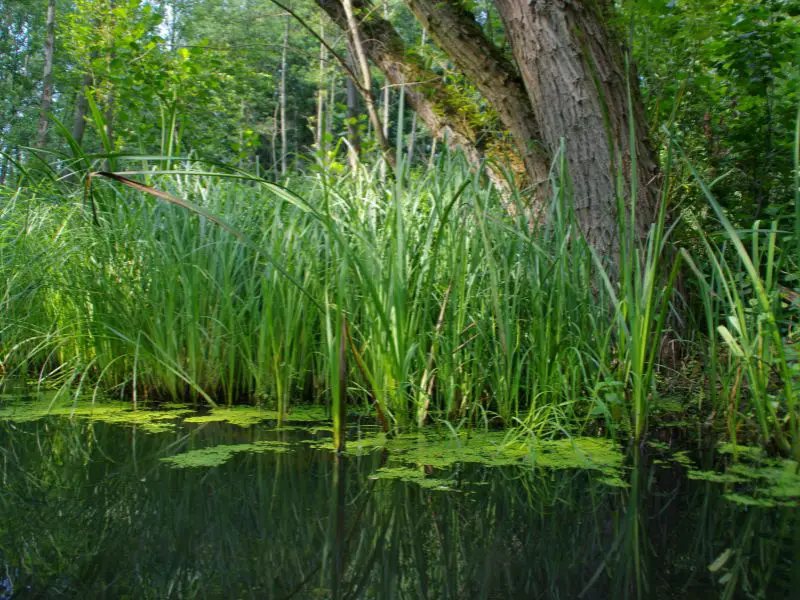Besides providing food and fiber, farmers and ranchers play an essential role in managing our natural resources.
Environmental Quality Incentives Initiative (EQIP) is a voluntary conservation program that gives cost-share funding and technical help to farmers and ranchers who install conservation techniques on operating the agricultural property. They offer funding pools for farmers or ranchers for certified organic produce.
In this article, we’ll learn about how it can assist you and how you can apply for special initiatives.
What is the Environmental Quality Incentives Program
The Environmental Quality Incentives Program (EQIP) helps farmers by giving them money and advice on how to take care of natural resources and help the environment through measures like improving air and water quality, conserving ground and surface water, improving the soil health and reducing soil erosion and sedimentation—making or improving wildlife habitat.

EQIP History and Funding
EQIP was initially approved by the 1996 Farm Bill and has subsequently been enacted into law and modified by each following farm bill. The scope of the Environmental Quality Incentives Program (EQIP) for water conservation, expanded by the 2018 Farm Bill, now includes states, irrigation districts, groundwater management districts, acequia, land-grant institutions, and other similar organizations.
The 2018 Farm Bill boosts EQIP’s total available funding to $2 billion annually by 2023. In addition, the farm bill raises the percentage of land set aside for wildlife from five to ten percent and boosts the funding rate for the EQIP Organic Initiative to $140,000 during the five-year duration of the law.
EQIP Wetland Conservation Practices
EQIP conservation efforts include wetland restoration, enhancement, and management; wetland and upland wildlife habitat improvement; prescribed burning; riparian herbaceous cover; grassed waterways; integrated pest management; and repair and management of rare and falling habitats.

EQIP Numbers
More than 2.7 million acres of land in Texas participated in EQIP in 2012, as shown in a USDA Soil and Water Resources Conservation Act report. The Wildlife Habitat Incentive Program (WHIP) was merged into EQIP in the 2014 Farm Bill, along with new advanced payment options for agricultural veterans, an increase in the advanced payment percentage to 50%, and a cap on total payouts of $450,000.
Conservation Innovation Grants
The Conservation Innovation Grants (CIG) program is an essential subset of the EQIP. CIG offers incentives to farmers who voluntarily develop and implement conservation strategies and technology. Individuals, Tribes, and non-Federal governmental or non-governmental organizations may compete for CIG funding. Past CIG award projects include installing computer-controlled automatic sprinkler systems and creating quantification tools to support marketplaces.
EQIP Assistance Offered
EQIP may cover up to 75% of the expenses of specific conservation initiatives that are critical to enhancing and preserving the health of the area’s natural resources. Incentives may be paid to producers to encourage them to use land management strategies such as nutrient management, manure management, integrated pest control, irrigation water management, and wildlife habitat management.
EQIP Contracts
The EQIP program provides 5- to 10-year contracts that include incentive payments and cost-sharing for conservation initiatives specified in the site plan. Contract applications are accepted all year round.
The NRCS assesses the producer’s environmental contributions. These bids are rated using criteria established by consulting with the regional workforce. The FSA County Committee reviews the highest priority proposals for funding approval. The EQIP’s overarching objective is to maximize environmental benefits while minimizing costs.
EQIP Payments
Cost sharing may cover up to 75% of conservation initiatives needed to enhance and sustain natural resources. These incentives are in span 3 years to encourage farmers to utilize management measures they wouldn’t otherwise.
Are you Eligible for the Environmental Quality Incentives Program?
Suppose you are a landowner or lessee of agricultural property threatened by the environment, such as a farmer, rancher, agrarian producer, non-industrial private forest landowner, or Tribe. In that case, you may qualify for this assistance program.
All types of farming are eligible for EQIP aid, from cropland, rangeland, pasture, non-industrial private forestland, and agricultural or ranch properties.

The ranking criteria are based on the following:
- Cost-effectiveness of the strategy.
- How efficiently and thoroughly they manage specific resource challenges.
- Fulfillment of the objectives set for the EQIP program
- The completion of a conservation system or the improvement of conservation practices or systems already in place on the operation when the contract offer is accepted.
All actions carried out under this initiative must contribute to the protection of natural resources. All approved applicants must collaborate with the NRCS to design and submit a conservation plan that addresses the situation of the applicant’s property and conservation efforts.
How Can You Apply for the Environmental Quality Incentives Program?
The first step is to get in touch with the NRCS office in your area. A conservation planner from the NRCS will set up a time to come to your property. They will walk the land with you and discuss your goals and any concerns about resources.
Following the site inspection, the conservation planner will prepare a plan incorporating several conservation strategies or actions to meet the mentioned resource issues and management objectives.
The NRCS is always accepting conservation program applications, but customers should apply by their state’s ranking dates to be considered for the current round of funding.
Get in touch with your local NRCS office to learn more about EQIP.

Bottomline
In conclusion EQIP funding is limited and not guaranteed. All EQIP applications are evaluated based on the current funding available, and the NRCS is addressing conservation needs and priorities along with additional funding sources. Make your application as soon as possible to be considered by the ranking dates set by your state. Farmers may learn more about EQIP by contacting their local Natural Resources Conservation Service office or visiting their local office website.
We hope this article helps you with your future farmland investments. Thank you for reading! Find out more about gardening below.


1 thought on “Understanding the Environmental Quality Incentives Program (EQIP)”